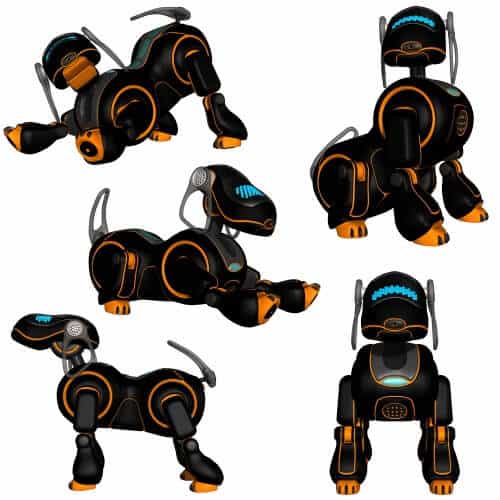Dogs help humans with various tasks, but have you heard of dogs helping to design robots?

By: Ofir Marom
Dogs help humans with various tasks, but have you heard of dogs helping to design robots?
Designing social robots? Pay attention - the next time you want to test a prototype, you should also bring your dog to the lab and watch his interaction with the robot. Maybe you can learn a thing or two that will improve future designs. In the study, published by Gabriella Lakatos (Gabriella Lakatos) from the Hungarian Academy of Sciences, it was found that man's best friend responds with friendliness to robots that behave socially towards them, even if they do not look human. In the study, the reaction of 41 dogs who were divided into two different groups was tested, where in both groups the dogs watched the interaction: one group watched the interaction between their owners and a human experimenter, and the other the interaction between their owners and a robot.
The robot being tested is a customized, human-sized PeopleBot robot with two arms and four fingers on each hand. One of the robotic arms can perform simple gestures and grasp objects. The PeopleBot robot does not resemble a human, but looks more like a fitness machine, with a white gloved hand attached to it. The robot was programmed to perform actions similar to human social behavior (such as calling a dog by its name), or to behave "unsocially" like a machine. The human experimenter was limited to performing only moves similar to the robot's capabilities, and therefore could only use one hand and make specific gestures.
In the first group, with the human experimenter, the interaction was "social", while in the second group the interaction was "non-social". Immediately after the interaction, regardless of its nature, the robot or the dog's owner pointed in the direction of food that was hidden there.
The "social" abilities demonstrated by the robot failed to stimulate the dogs socially, as they can be stimulated in close relationships with humans. However, the researchers did observe a number of distinctly positive social interactions between the dogs and the robot. For example, the dogs spent more time near the robot, or looked at its head when it behaved in a "social" manner. The dogs were much better at finding the hidden food when a "social" robot pointed to it than when an "unsocial" robot did. The researchers believe that the dogs' previous experience with the robot, when watching their owner interact with the PeopleBot, influenced their attitude towards it when they were confronted with it in the voting phase.
Lakatos and her colleagues claim that this type of research not only provides important insights into the mental processes of living beings, but also into how social robots should be designed.
Source of knowledge

One response
Excellent find, just a small question, I didn't understand why you shut it down, I didn't read it